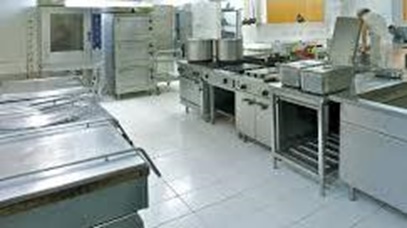Grease Traps, Drains, Floors & Walls

Problems/Issues
Clogging or slow flowing drains, unpleasant odors emanating from the system and discharge of FOGs into the sewer system. Chemical-based products contain large amounts of acids, caustic or other corrosive compounds. These may temporarily dissolve away some of the clogging material, but their continued use will ultimately lead to damage to plumbing material and the environment they are exposed to. Furthermore, the caustic chemicals can loosen chunks of solids that could lead to clogging and blockages themselves. Caustic chemicals also kill beneficial microorganisms that would be more effective at digesting the waste. In floors and walls grease and oil buildup can create odors, health and safety issues and unsightly scenes that need to be eliminated.
Description
Grease traps are necessary in preventing the discharge of fats, oil & grease (FOG) and solid particles into the sewer system where they can accumulate and cause blockages, odors, and corrosion to plumbing material. Proper functioning of grease interceptors require frequent and costly pump-out of accumulated FOGs and solids material.
Initial Treatment
The pH in traps usually gets low due to the development of organic acids from partial degradation of organic matter. If UZP Enzymatic Treatment starts right after pumping, and the dosing rate is adequate, the pH should be more stable. All grease traps must have the initial treatment added directly to the trap itself. The preferred method of initial treatment is to clean the trap and apply the product when no new wastewater will be flowing into the trap for several hours. Before applying the product you must determine the size of the trap and the amount of product required. Mix the product with warm water (do not use hot water because it can kill bacteria) and pour it into the trap. For best results it is recommended to remove grease and liquid from the trap prior to adding the product. After the product is added fill the trap with water to the normal level. If there is a crust present on the surface, poke a hole in the crust and pour the product directly into the trap. Initial application is the only time adding product directly into the trap is required. MORE ...
Maintenance Treatment
After initial treatment, weekly maintenance applications maintain viable strains of microbes active within the trap. Therefore maintenance applications can be done by adding directly to all openings / drain lines discharging into the grease trap. For maintenance applications of the product into grease traps, all that is required is that you follow regular maintenance schedules for commercial applications into drains (contact us to determine the dosage and frequency of them). Grease traps near dishwashers using preheated rinse cycles should be allowed to cool or be flushed with cold water before applying the product. The high temperatures (over 60 degrees Celsius) can kill some microorganisms. If the grease trap is connected to septic systems, it is important that the product is used on a regular maintenance schedule to prevent grease from stopping percolation in the absorption field. Visible evidence may take a few days depending on build up. Do not drain pickle juice into drains that go into grease traps because the juice will result in an acid concentration that kills bacteria. Also, if straws, plastic pieces or other inorganic material builds up in the trap and make removal necessary, then reapply initial amount in the same manner to re-start. MORE ...
Floors & Walls Treatment
An initial treatment for cleaning floors can be done using a power floor scrubber or by hand using a pump sprayer and stiff bristle brush. For walls a hand sprayer and a brush will do. Apply the product to the floor or wall surface to be treated by using the brushes or floor scrubber. Allow the solution to remain on the surface for 30-60 minutes, make sure it stays wet by re-applying product as needed. After this pick up solution by vacuuming it up off the floor or rinse off walls. Once floor is dry mop the floors or wipe walls with a damp cloth. MORE ...


